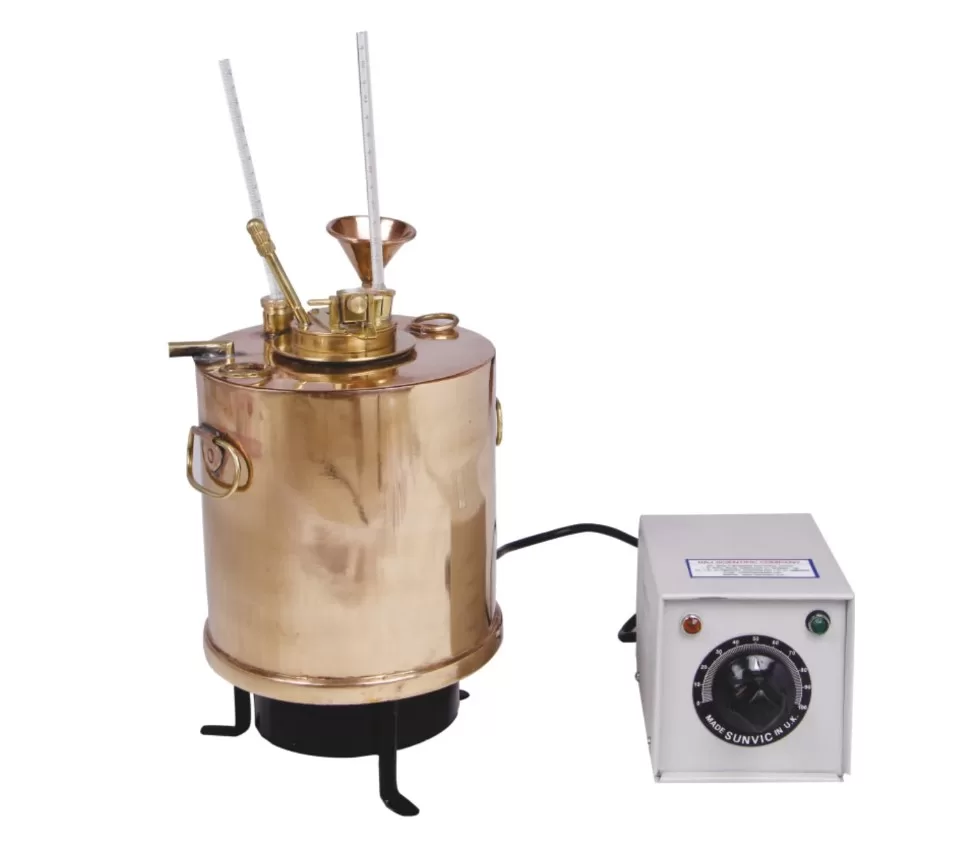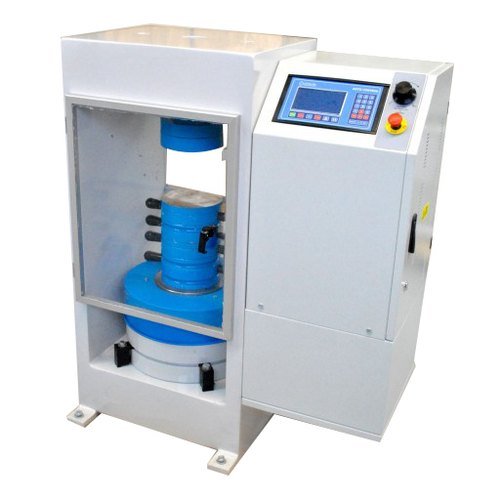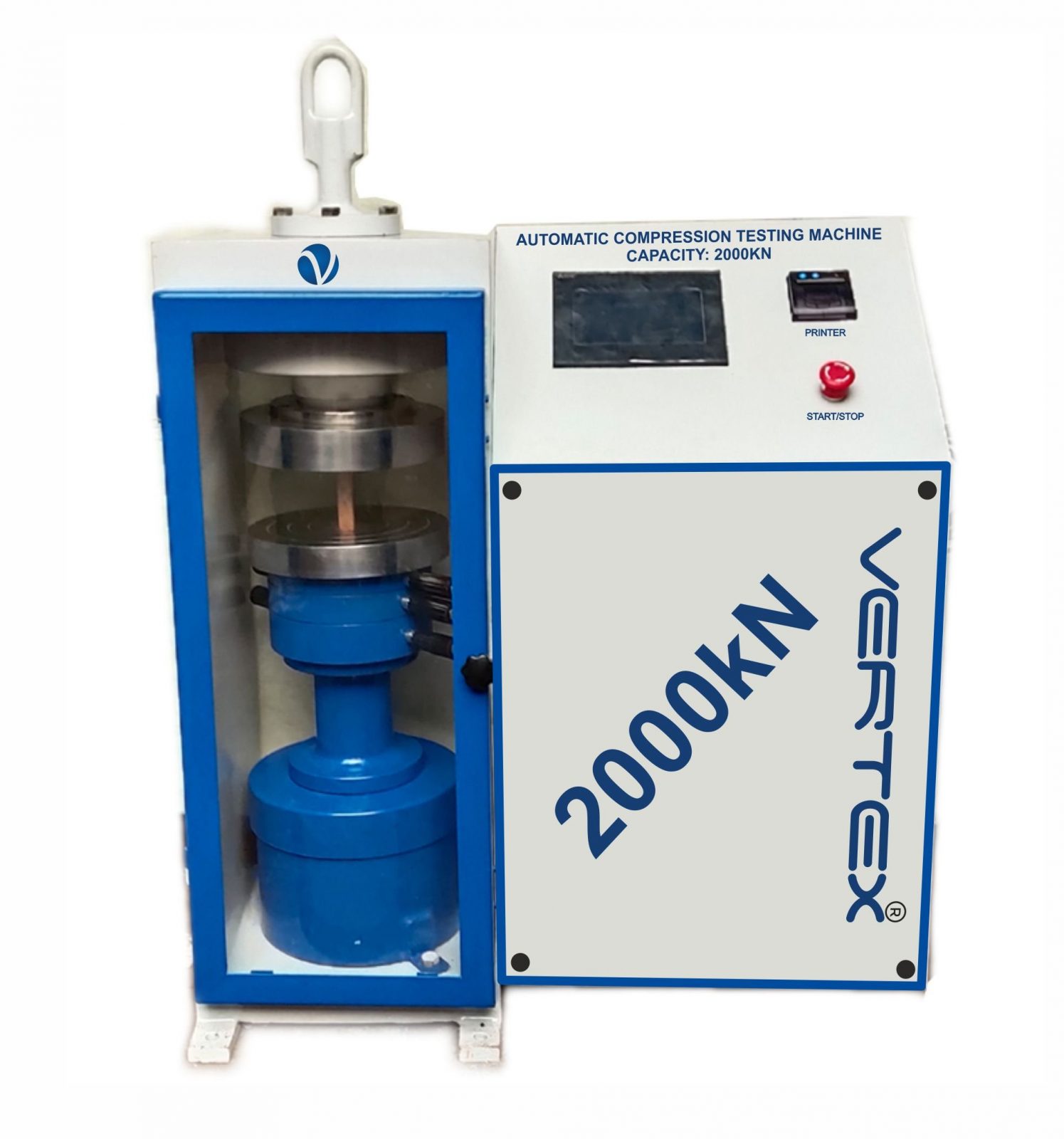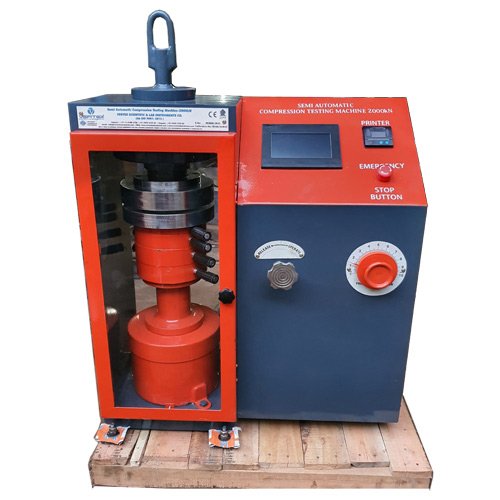ABLES FLASH AND FIRE POINT APPARATUS WORKING PRINCIPAL
SCOPE:
This method of test is designed for the determination of the closed flash points
of cutback bitumen’s of which the flash points do not exceed 230’ F (110’ C). Use is made of a modified form of the Abel apparatus.
The results obtained by this method do not differ appreciably from the minimum flash point of the material under equilibrium conditions of temperature and vapour pressure.
OUTLINE OF METHOD:
The sample is place in the cup of an Abel flash point apparatus and heated at a very slow uniform rate with stirring. A small test – flame is directed into the cup at regular intervals, and the flash point is taken as the lowest temperature at which application of the test flame causes the vapour above the sample to ignite.
APPARATUS
- Flash Point Apparatus- The apparatus to be employed shall be an able flash point apparatus with stirrer, as described in IP 33, Appendix I, but provided with means for mechanical stirring. Provision shall also be made for maintaining a good circulation in the water-bath, e.g., by means of a gentle stream of air being introduced through a fine tube entering the bath through a hole bored for the purpose.
- Thermometers – Conforming to the specification IP 43, F or C, and IP 44, F or C.
SAMPLE
In view of the case with which volatile matter can be lost from some cutback
bitumen’s, all possible precautions should be taken against excessive handling of the sample in order to minimize its exposure to the atmosphere. In all cases, samples for the flash point test must be submitted in closed containers and it is strongly recommended, particularly in cases of dispute, that a separate sample (at least 4 oz (100g) should be made available for this test.
PROCEDURE
- If the sample is too viscous for ease of pouring at laboratory temperature, warm it gently in its closed container in a water-bath taking care not to raise the temperature of the sample higher than 20’ F (11’C) below its flash
Note 1: If it is found after the determination of the flash point that this condition has not been observed, or any of the conditions laid down in respect of temperature and temperature rise (see subsequent sections (b), (e), and (f) the test must be repeated with the temperatures suitably adjusted.
- Fill the water-bath and the annular space between the oil-cup and the water- bath completely with water, or with water and glycerol if it is expected that the flash point will be near or above 212’ F (100’C). With the oil – cup thoroughly clean and dry and in position, heat the apparatus to a temperature which is substantially the same as that of the preheated sample in (a), and which, in any case, is not higher than 20’F (11’C) below the flash point of the sample.
- Fill the oil-cup to the level indicated by the point of the gauge with the sample treated according to (a), put the cover in place and fit the
- Start the stirrer and regulate its speed to 70-80 rpm with a downward thrust. If this speed cannot be attained with very viscous materials at the start of heating, increase it as soon as the oil is warm enough.
- Light the test flame and adjust it to a bead approximately 0.15-inch (4mm) diameter. Apply heat to the water-bath so that the rate of temperature increase of the oil in the cup is less than 0.75’ F (o.4’C) nor more than 1.25%F (0.7’C) /min.
- At each “2’ F (1’C), without stopping the stirrer, apply the test flame. Make the first application at least 20’F (11’C) below the flash point and make all applications in the following manner:
Draw the slide slowly open while a metronome, set at 74-80 beats per min, beats three times, and close during the fourth beat. A pendulum of 24 inches (60cm) effective length may be used in place of the metronome, counting one beat from one extremity of the swing to the other.
- Continue in this manner until the application of the test flame cause a distinct flash in the interior of the cup, but do not confuse the actual flash with the bluish haze that sometimes surrounds the test flame. Record the temperature indicated by the oil-cup thermometer at which the actual flash occurs and also the barometric pressure to the nearest
CALCULATION AND REPORTING
- Correct the observed flash point to standard atmospheric pressure using the following rule:
For each inch (25mm) below 29.92 inches (760mm) barometric reading, add 1.6’ F (0.9’C) to the flash point.
For each inch (25mm) above 29.92inches (760mm) barometric reading, sub tract 1.6’ F (0.9’C) from the flash point.
- Report the corrected flash point to the nearest 1’F (0.5’C) as flash point (Closed) of cutback Bitumen, IP 113.
PRECISION
Results of duplicate tests should not differ by more than the following amounts.
Repeatability Reproducibility
4’ F (2’C) 8’ F (4’C)







